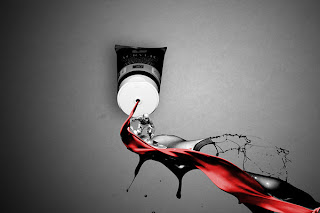Article
The new implementation of laser technology to recreate the world in different eras is extremely interesting. It reminds me of many books, such as The Time Machine, that create adventure in a place in the past. We would no longer have to imagine what it was like to live when our grandparents were growing up, but we could visit it ourselves. Although I believe this technology to be extremely interesting and educational, I do not think that this technology will become commonplace in the homes of Americans any time soon. Adults would not be able to take to it very well, and I think many young adults and teenagers in the United States at this time have little or no interest in exploring the past. If this technology ever becomes commonplace enough to be on the the home desktops of people in the United States, I think that it would be unlikely for casual computer users to ever see a need to use it.
Monday, November 9, 2009
Thursday, November 5, 2009
Tuesday, November 3, 2009
TMA Redux
Museum Redesign
Internal Artwork
Molinet's Tragic Kingdom sheds a new light on the famous kid-friendly Disney. His Mickey Mouse has morphed into a character with fangs and dragon-esque features, allowing to a more terrifying feeling; this is not a theme park you would want to take your children to. Not only does the figure has a cartoon-like appearance, but the lettering and background are also designed as whimsical features. Molinet definitely knows how to get around Illustrator to use symbols such as the paint drip and sun ring to add an environment to the artwork.
Pablo Alfieri is a graphic designer from Buenos Aires, Argentina. This design was created for the company Beautiful Decay to produce and sell commercially as t-shirts. It was produced along with one other design during the summer of 2009. Body Parts is a collage of human anatomy. The connection of unattached limbs makes the pieces seem as if they were ripped from off of a mannequin and the face without eyes only solidifies this. The piece is commenting on modern society’s ideas of beauty and how beauty is often not connected to an emotional soul.
Although Ricardo Ajcivinac seems to have a love for graffiti art, he shows us that not only does excel illustration, but also at photo manipulation. His piece Sunrise (2008) takes a photo of a woman and, using programs such as Adobe Photoshop and Illustrator, to add lighting effects and fluid forms. Figures that frame the woman’s face, for instance, the surfer on her right, add to the sense of fluidity of the artwork and helps the viewer gain a sense of freedom from boundaries that the flowing forms create by running off the canvas.
Justin Maller is a freelance illustrator and art director based in Melbourne, Australia. A veteran digital artist of eight years, he has created illustrations for numerous companies and developed a reputation as a talented graphic designer. This work is a nod to a conventional form of art: paint flow out of the bottle and is ready for an artist to use. But Maller uses this theme of conventional artwork to create a new something unconventional and relative to the digital art world but creating a 3D flow of paint on which a surfer can ride the stream of paint.
Masaki Yokobe is a graphics designer based out of Japan. He has an extensive background working with multiple types of computer graphics, including motion, 2D, and 3DCG. As a CG designer at Namco, Yokobe gained experience created graphics of all types and to pay attention to small details. This piece shows his exploration of Photoshop. The image in the lower left-hand corner is the same as the one in the upper right-hand corner, but with multiple variations. The artist added a motion blur using the built-in filters and changed the hue and saturation of the figures to create even more chaotic alter egos of the characters.
Subscribe to:
Posts (Atom)






